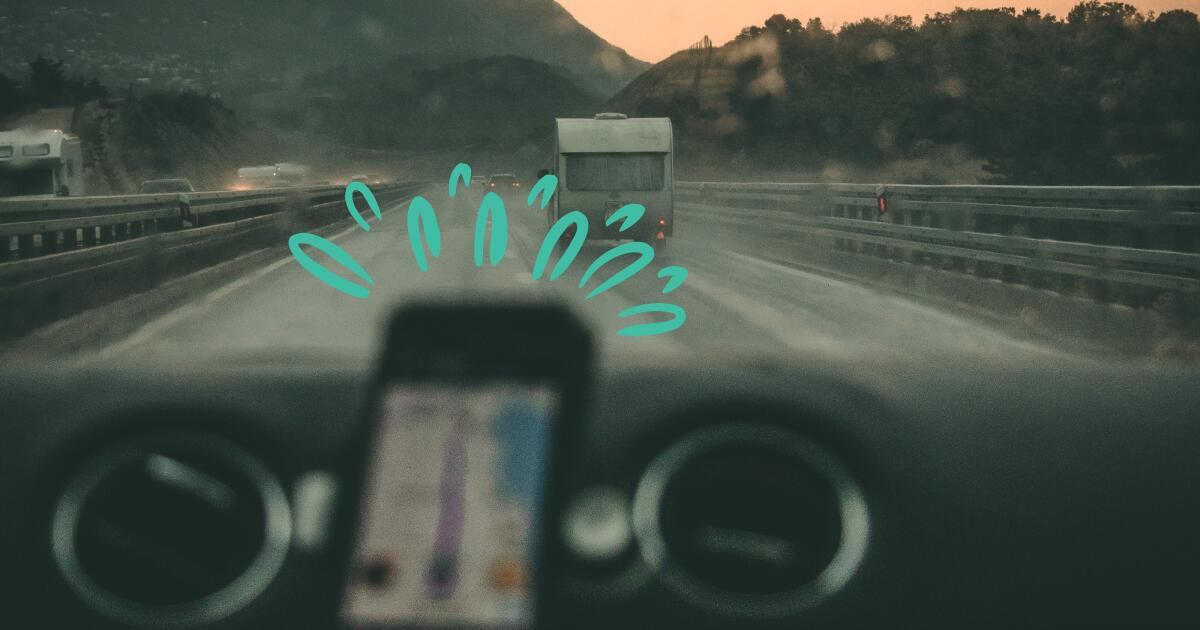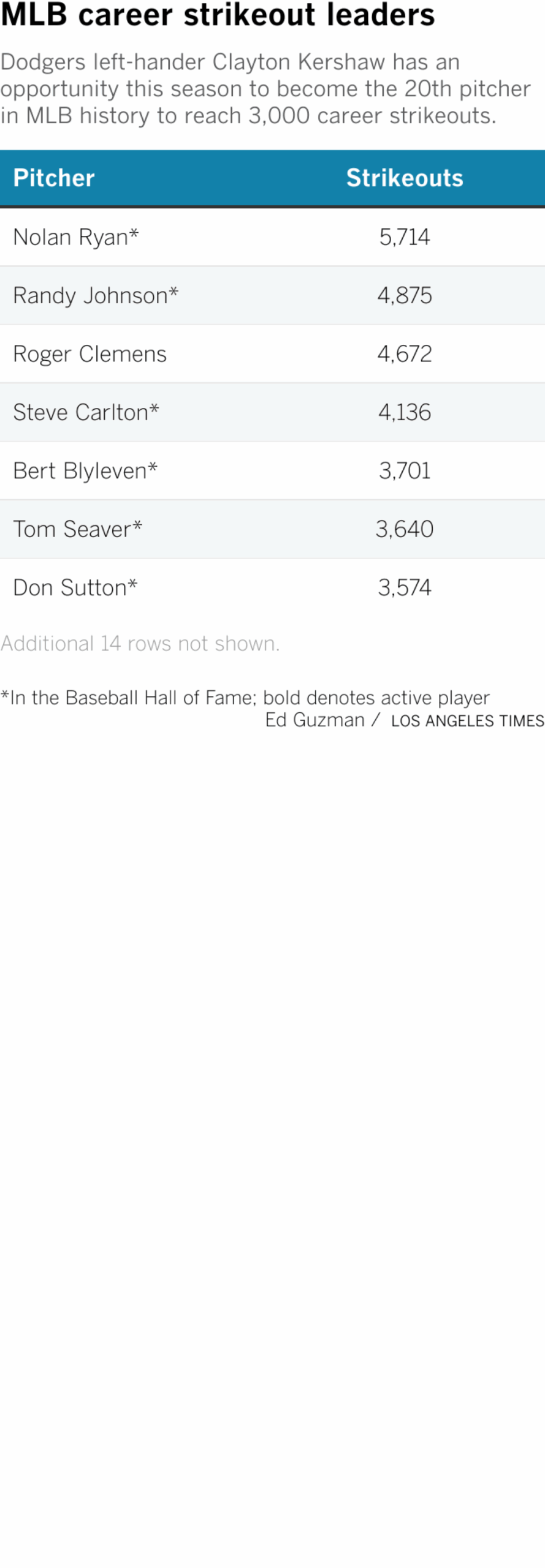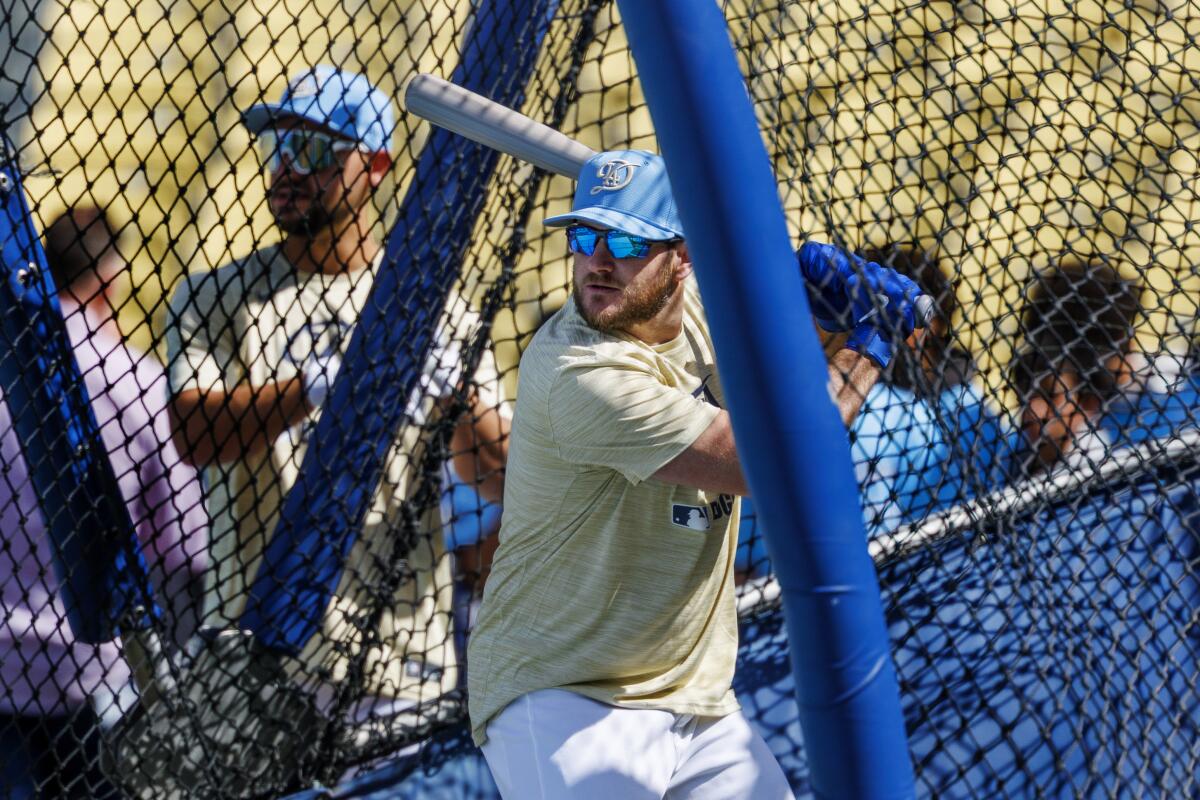A road trip to Big Sur’s South Coast — without crowds
Sometimes, the best place you can go is a dead end. Especially when that dead end is surrounded by crashing surf on empty beaches, dramatic cliffs and lonely trails through forests thick with redwoods.
That’s the situation along Big Sur’s South Coast right now.
A chunk of the cliff-clinging highway has been closed for a series of landslide repairs since January 2023, making the classic, coast-hugging, 98-mile San Simeon-Big Sur-Carmel drive impossible. Caltrans has said it aims to reopen the route by the end of March 2026, if weather permits.
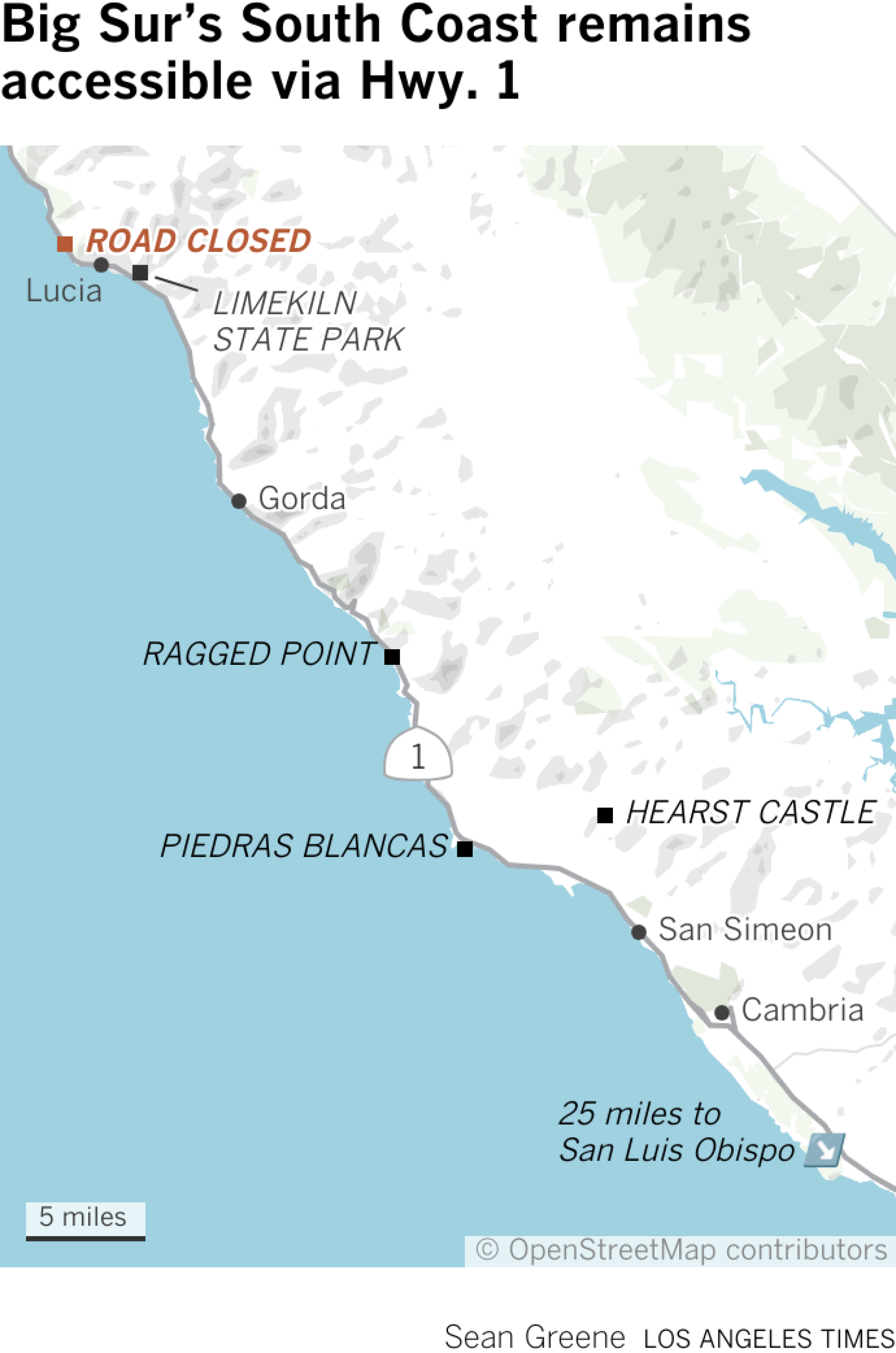
That means the 44-mile stretch from San Simeon to Lucia will likely be lonely for at least six more months. Travelers from the near north (Carmel, for instance) will need to detour inland on U.S. 101. Meanwhile, many Canadian travelers (usually eager explorers of California) are boycotting the U.S. altogether over President Trump’s tariff policies and quips about taking over their country.
And so, for those of us in Southern California, the coming months are a chance to drive, hike or cycle in near solitude among tall trees, steep slopes and sea stacks. The weather is cooler and wetter. But over the three October days I spent up there, the highway was quieter than I’ve seen in 40-plus years of driving the coast.
Moreover, those who make the trip will be supporting embattled local businesses, which remain open, some with reduced prices. Fall rates at the Ragged Point Inn, 15 miles north of Hearst Castle, for example, start at about $149 nightly — $100 less than when the road was open.
“It’s kind of perfect,” said Claudia Tyler of Santa Barbara, on her way from Salmon Creek Falls to two nights of camping at Plaskett Creek in Los Padres National Forest.
“I am sorry for the businesses…,” Tyler said, “but it’s good for the traveler.”
Further north, David Sirgany, 64, of Morro Bay, was getting ready to surf at Sand Dollar Beach, thinking about coastal erosion, climate change and this moment in history.
“To me,” he said, “it feels like the end of a time that will never be again.”
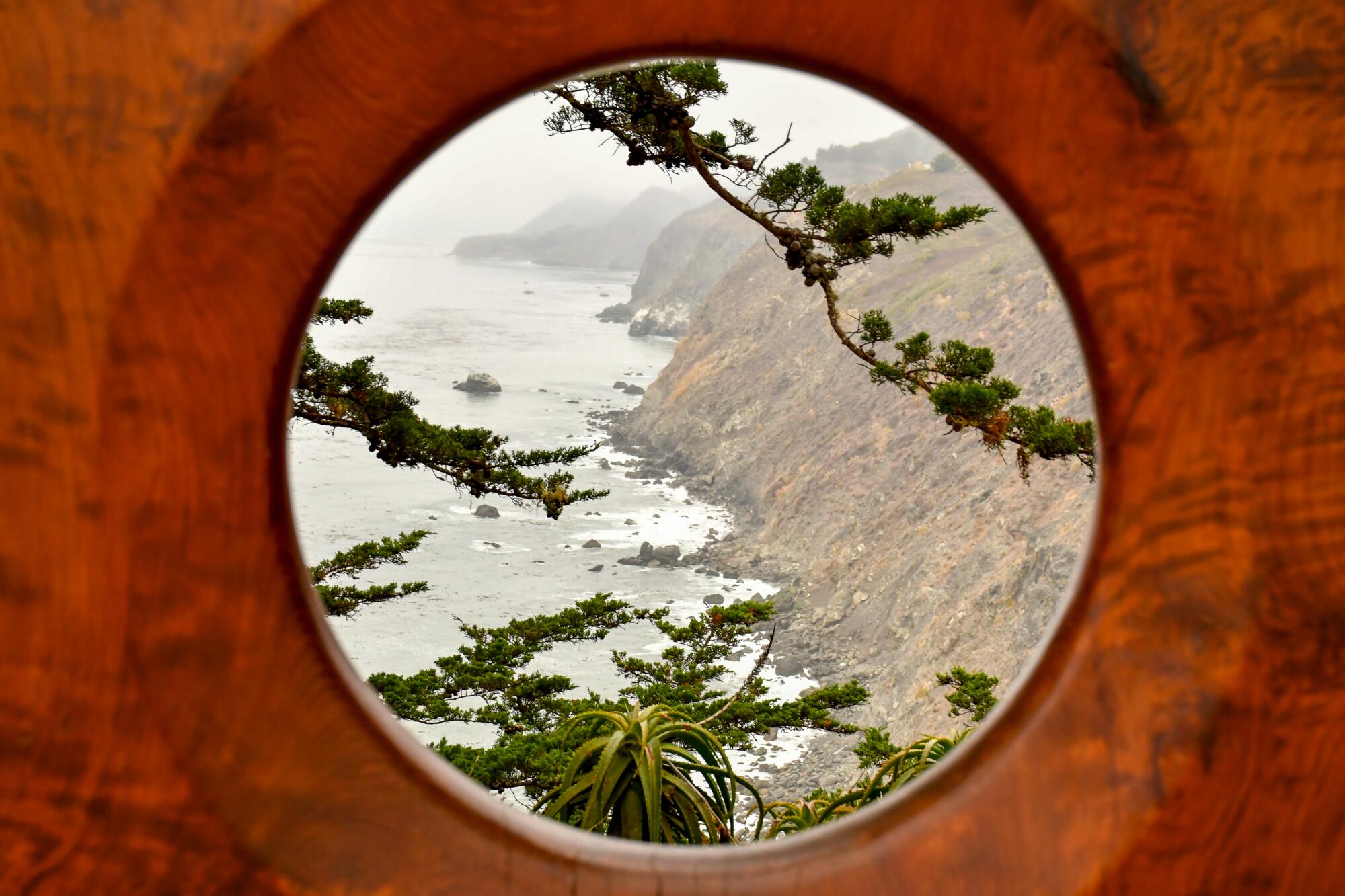
The Ragged Point Inn stands at the southern end of Big Sur.
The closed area, known as Regent’s Slide, begins about 26 miles north of Ragged Point, toward the south end of Big Sur, and covers 6.8 miles. Thus, you’d need to detour inland via U.S. 101 to reach most of Big Sur’s best-known attractions, including the Bixby Creek Bridge, Pfeiffer Beach, Nepenthe restaurant, Deetjen’s Big Sur Inn, McWay Falls and Esalen Institute.
But there’s plenty to explore on the stretch from San Simeon north to the roadblock at Lucia (milepost 25.3). Just be careful of the $8.79-per-gallon gas at the Gorda Springs Resort. (At $6.99, the Ragged Point gas station isn’t quite so high.)

San Simeon Bay Pier at William Randolph Hearst Memorial Beach.
Here, from south to north, are several spots to explore from San Simeon to Lucia. Be sure to double-check the weather and highway status before you head out.
See Hearst’s castle. Or just one of his zebras.
I’ve been hoping to see some of the Hearst zebras in the hills of San Simeon for years, and this time I finally did — a single zebra, surrounded by cows in a pasture beneath distant Hearst Castle.
That was enough to make my brief stop at the castle visitor center (which has a restaurant, historical displays and shop) well worth it. Other travelers, however, might want to actually take a tour ($35 per adult and up) of the 165-room Hearst compound (which is officially known as Hearst San Simeon State Historical Monument).
The state park system’s visitor tallies from June through August show that 2025 was slightly slower than 2024, which was slightly slower than 2023.
Perhaps with that in mind, the castle last fall added “Art Under the Moonlight” tours, which continue this autumn on select Friday and Saturday nights through Nov. 16. The castle also decorates for the holidays.
If you’re spending the night, the Cavalier Oceanfront Resort has 90 rooms (for as little as $169) and firepits overlooking the sea.
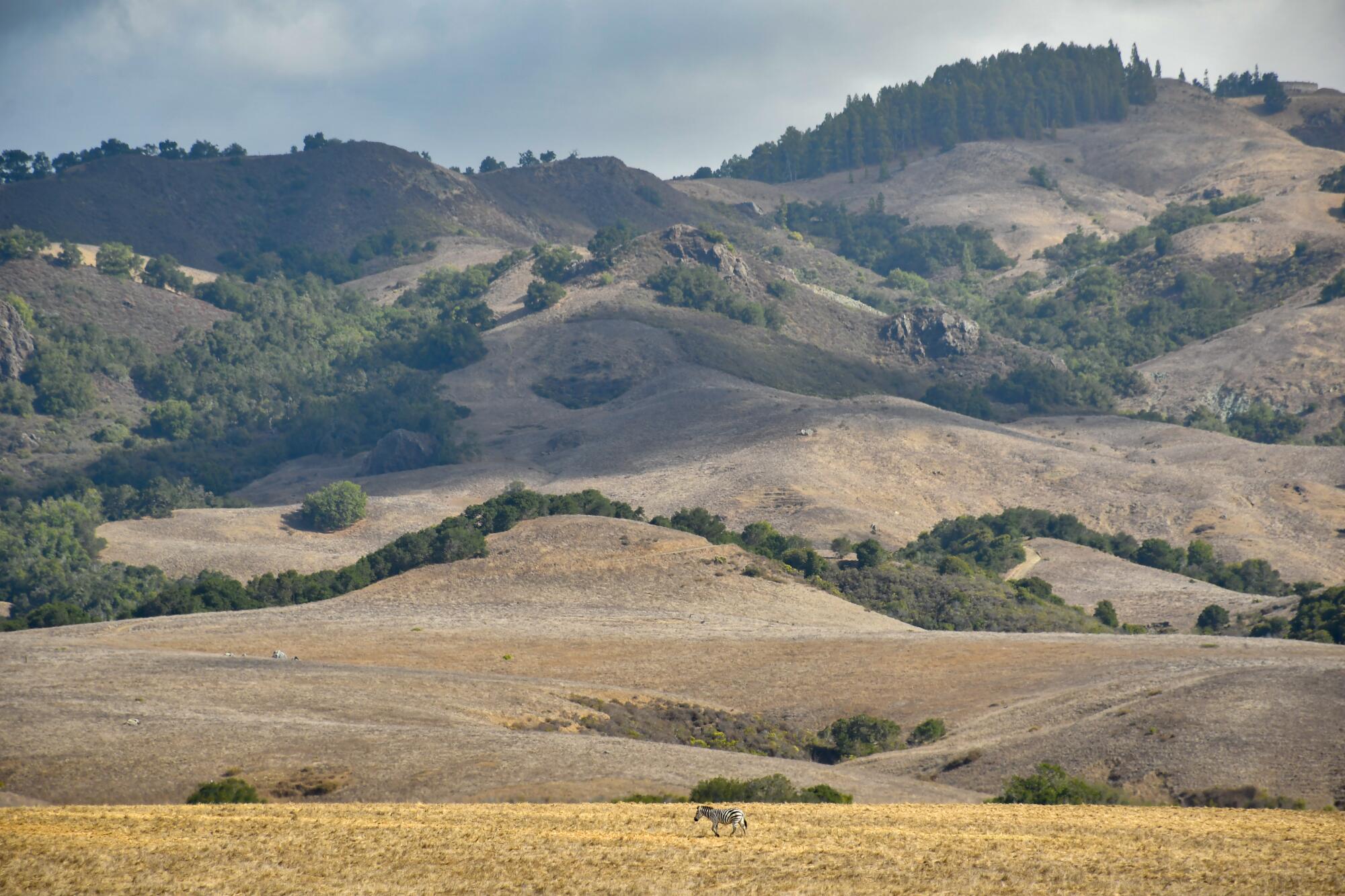
A zebra, part of the Hearst Castle animal collection, is seen from the visitor center off Highway 1 in San Simeon.
San Simeon Bay Pier or hike San Simeon Point Trail
My southernmost hike was at the San Simeon Bay Pier. From the parking lot there, walk north on the beach and follow a path up into a eucalyptus grove. That puts you on the 2.5-mile round-trip San Simeon Point Trail (owned by Hearst Corp. but open to the public.)
At first, the route is uneventful and surrounded by imported eucalyptus (now being thinned) and pines. But there’s a payoff waiting at the point, where tides lap on a little sand beach, waves crash on dramatic black rocks and pelicans perch on sea stacks. Look back and you see the beach, the pier and the hills of the central coast sprawling beyond them.
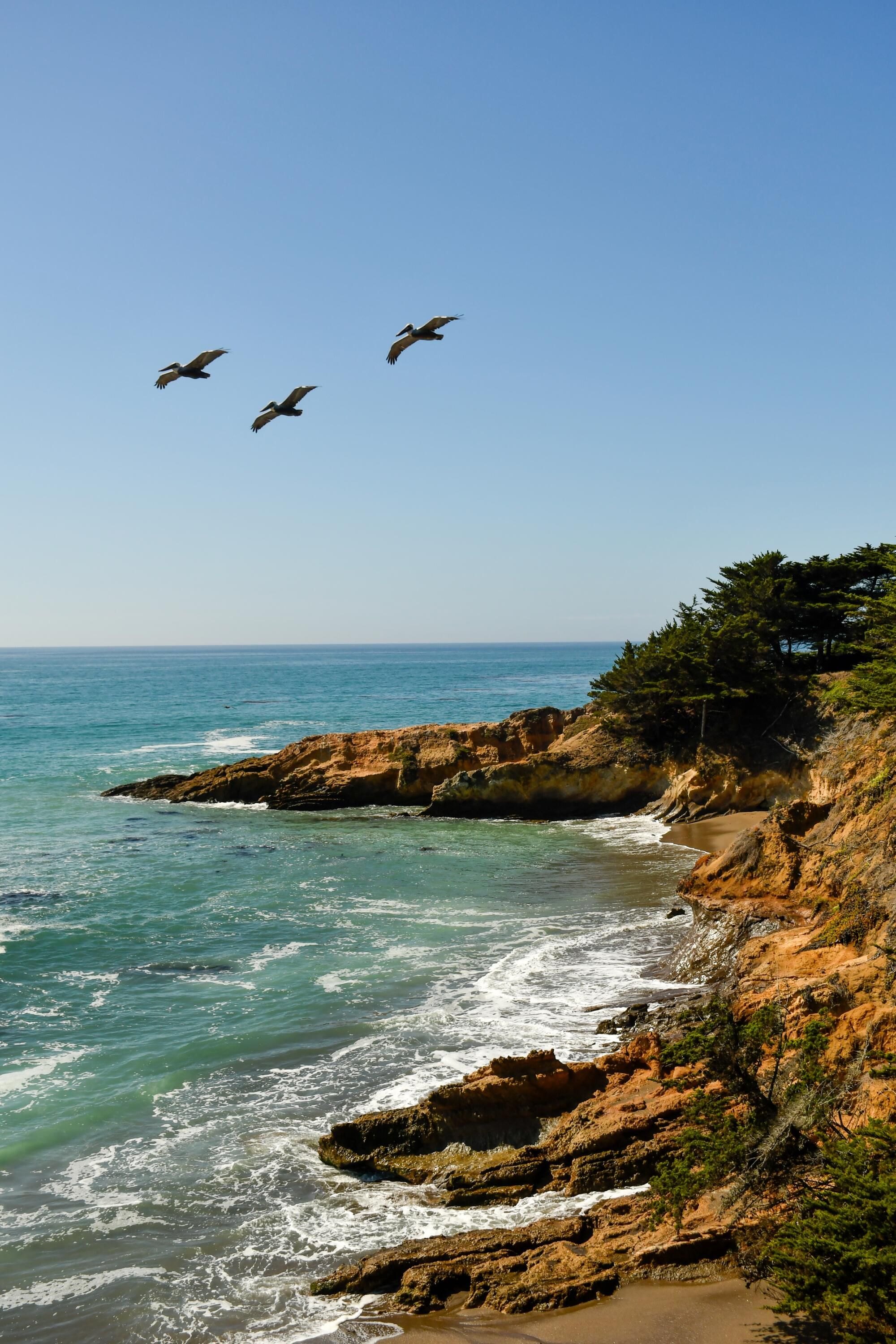
Then, if you’re as hungry as I was, you rapidly retrace steps and head to the Seaside Foods deli counter in Sebastian’s General Store, a block from the pier. (I recommend the Coastal Cowboy tri-tip sandwich, $21. But you could also take your meal across the street to the Hearst Ranch Winery tasting room.)
Find the Piedras Blancas elephant seal viewing area, then go beyond it
California’s coast is a catalog of uncertainties, from rising tides and crumbling cliffs to private landowners discouraging public access. But we can count on the elephant seals of Piedras Blancas.
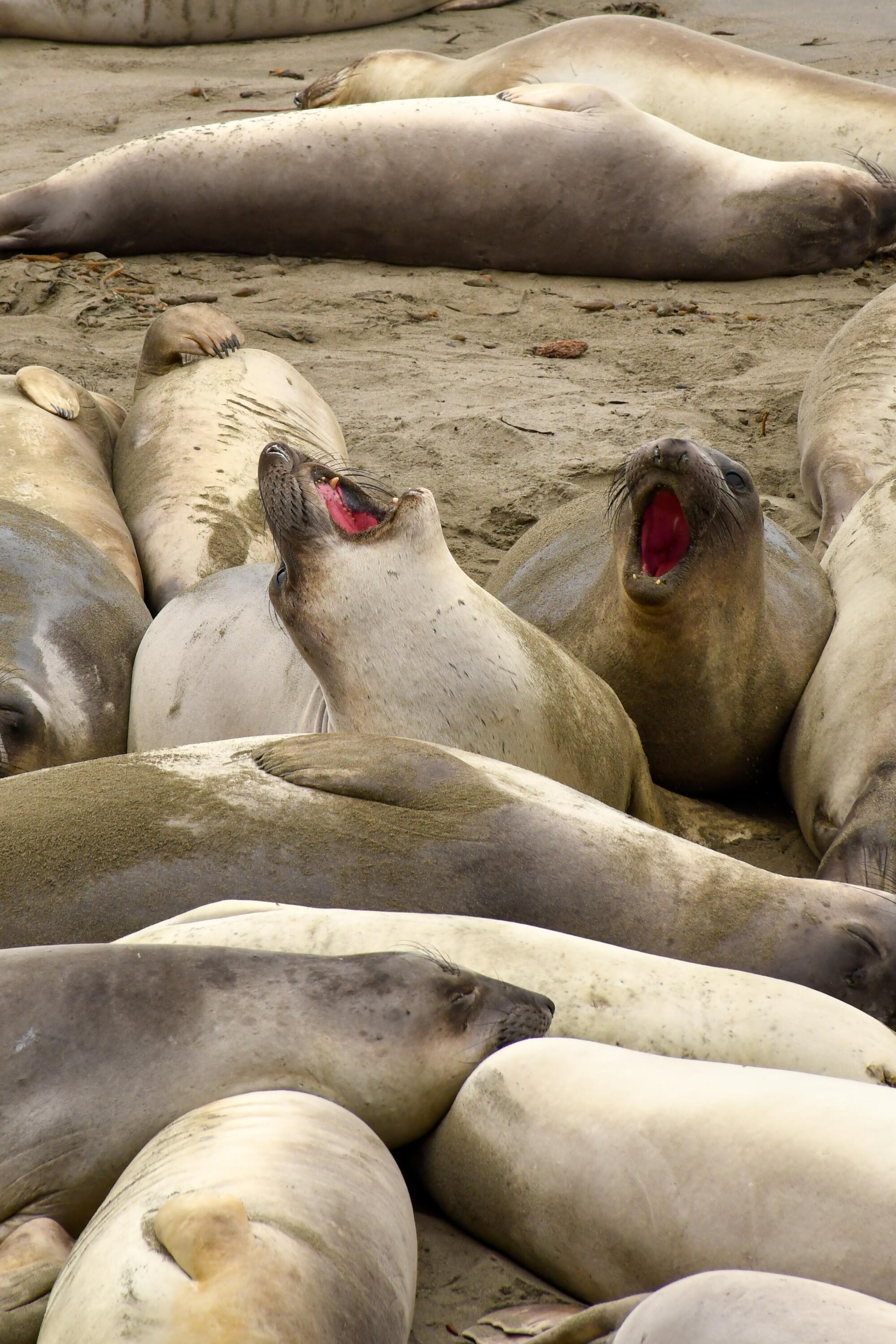
Elephant seals gather at Piedras Blancas, north of San Simeon.
Once you pull off Highway 1 into the observation area parking lot, no matter the time of year, you’re likely to see at least a few hulking sea creatures flopped on the sand and skirmishing for position.
Because it’s a great spectacle and it’s free, there are usually dozens of spectators along the shore. But most of those spectactors don’t bother to follow the boardwalk north and continue on the Boucher Trail, a 1.9-mile path along the bluff tops and across a meadow, leading to striking views of sea stacks and Piedras Blancas Light Station.
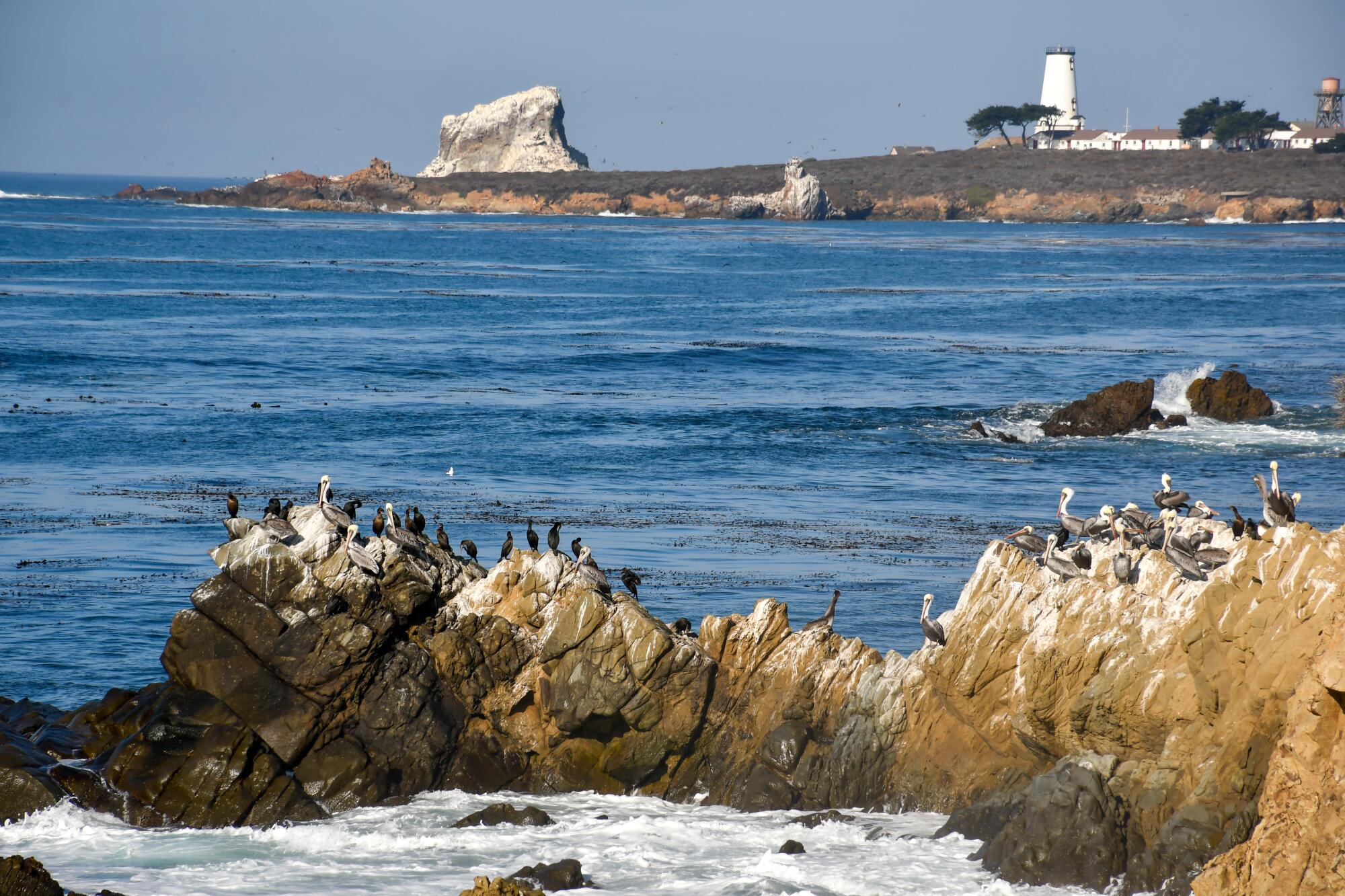
Along Boucher Trail, just north of the elephant seal viewing area at Piedras Blancas.
(BTW: Visitors need an advance reservation to tour the Piedras Blancas Light Station. At press time, all tours were canceled because of the federal government shutdown.)
At Ragged Point, that Big Sur vibe kicks in
About 10 miles beyond the elephant seals, the raw, horizontal coastal landscape morphs into a more vertical scene and the highway begins to climb and twist.
Right about here, just after San Carpoforo Creek, is where you find the Ragged Point Inn, a handy place to stop for an hour or an evening. It has 39 rooms, flat space for kids to run around, cliff-top views, a restaurant, gift shop, gas station and a snack bar that’s been closed since the highway has been blocked.
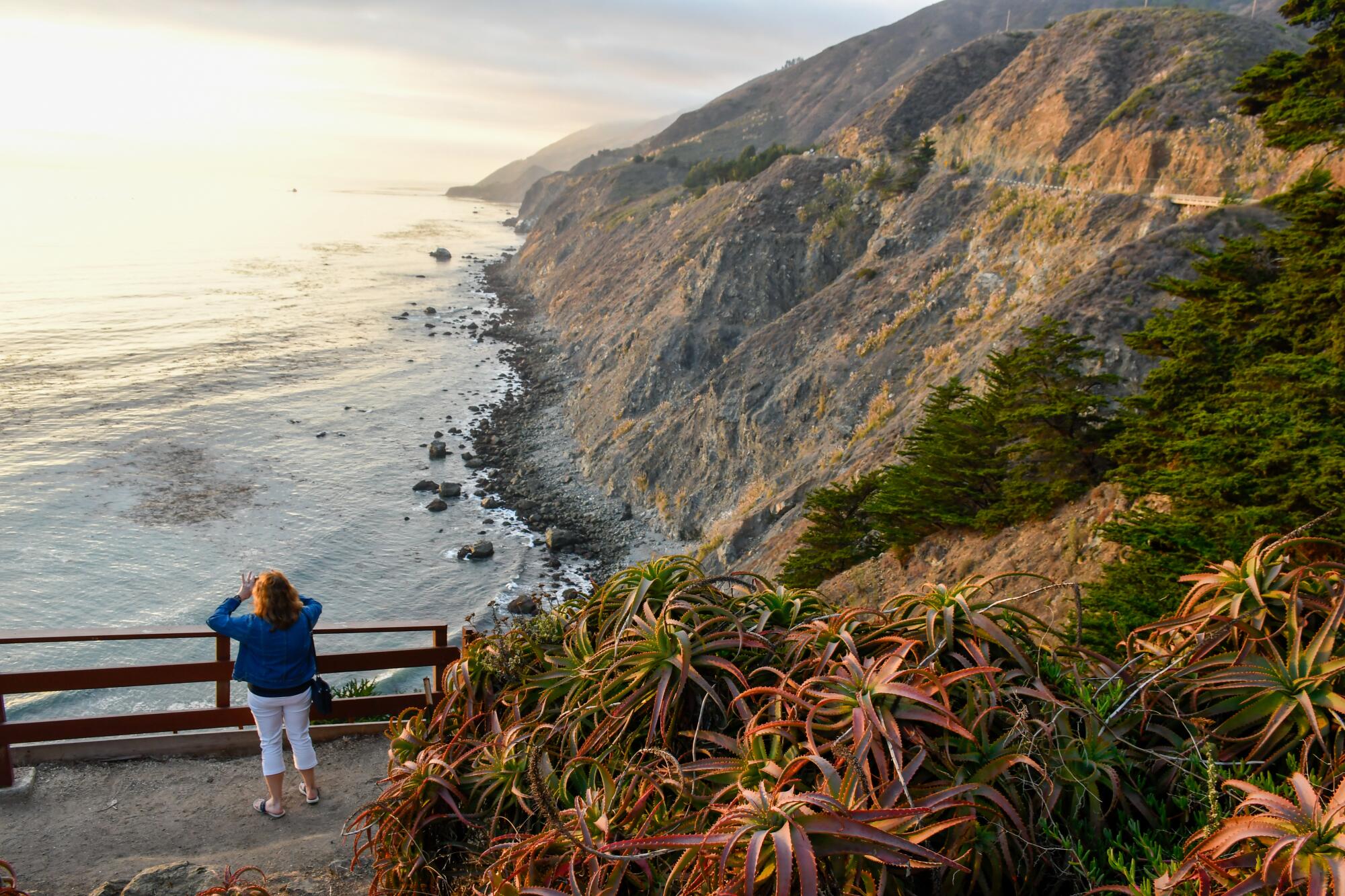
Right now, this stretch of the highway “is a great place to cycle,” said Diane Ramey, whose family owns the inn. “I wouldn’t do it at a normal time. But now the roads are uncrowded enough.”
To recover from the “frightening” drop in business when the road first closed, the inn has put more emphasis on Sunday brunch, the gift shop and live music on summer weekends, Ramey said.
At Salmon Creek Falls, roaring water meets tumbled rocks
At the Salmon Falls trailhead, 3.6 miles north of Ragged Point, there’s room for about 10 cars in the parking area on the shoulder of the highway.
When the highway is open, those spots are often all full. Not now. And it’s only about 0.3 of a mile to the base of the 120-foot falls, where there’s plenty of shade for the weary and boulder-scrambling for those who are bold. In the hour I spent scrambling and resting, I encountered just two couples and one family, all enjoying the uncrowded scene.
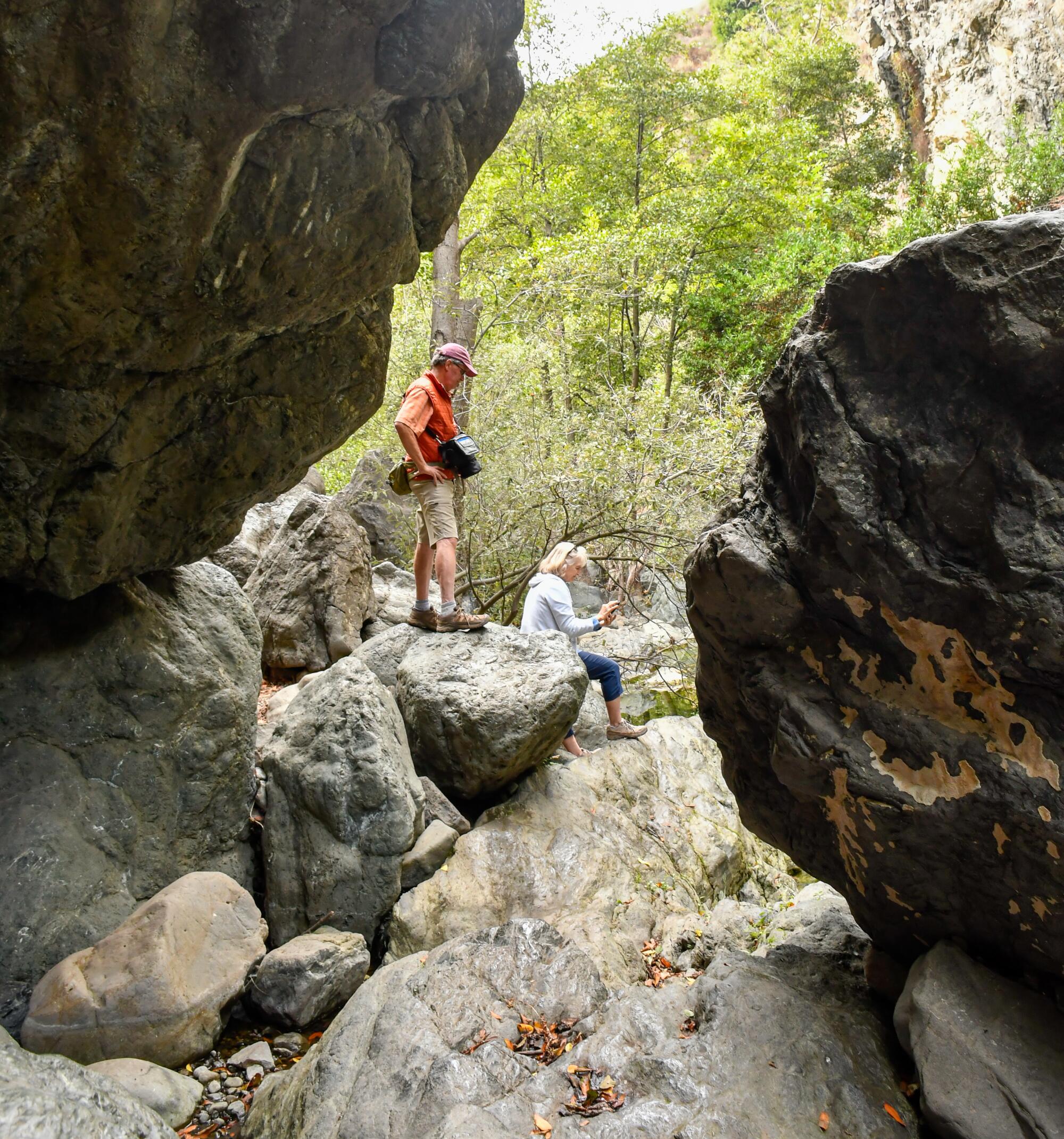
If you want a longer, more challenging hike, the falls trailhead also leads to the Salmon Creek Trail, a 6.6-mile out-and-back journey through pines, oaks and laurels that includes — gulp — 1,896 feet of elevation gain.
The yurts and quirks of Treebones Resort
Treebones, about 14 miles north of Ragged Point and 2 miles north of the rustic, sleepy Gorda Springs Resort, is an exercise in style and sustainability, producing its own power and drawing water from its own aquifer.

Treebones Resort, just off Highway 1 in the South Coast area of Big Sur.
Born as a family business in 2004, Treebones has 19 off-the-grid units, mostly yurts, whose rounded interiors are surprisingly spacious. Its Lodge restaurant offers chef’s-choice four-course dinners ($95 each) and a sushi bar.
If you book a yurt (they begin at $385), you’ll find your headboard is a felted wood rug from Kyrgyzstan (where yurts go back at least 2,500 years). The resort also has five campsites ($135 nightly, advance reservation required) that come with breakfast, hot showers and pool access.
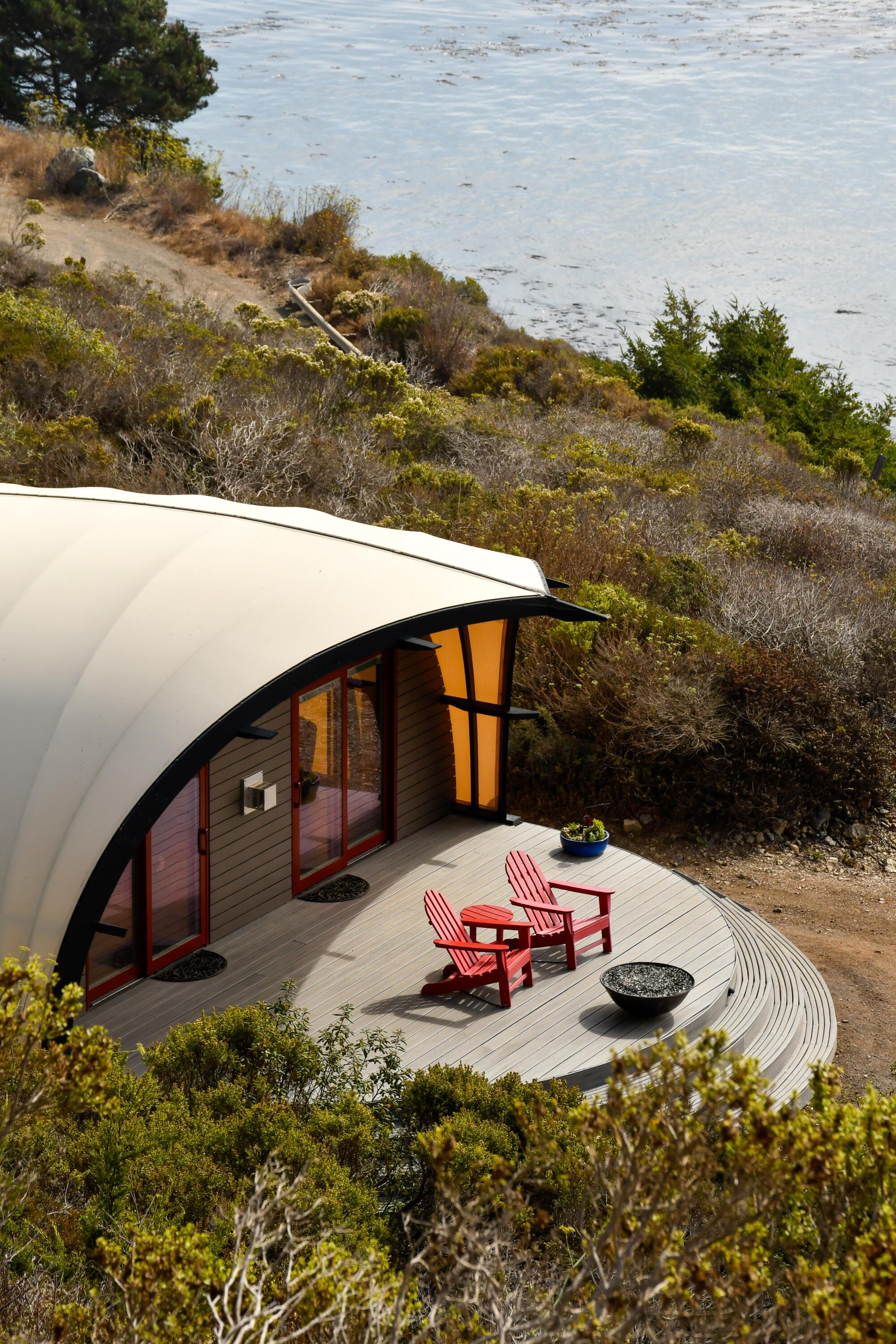
A deck at Treebones Resort.
“For the last 20 years, we were basically 100% occupied from April through October,” assistant general manager Megan Handy said, leading me on a tour. Since the closure, “we’ve stayed booked on the weekends, but we’ve seen at least a 40% decline midweek.”
Once you’re north of Treebones, beach and trail possibilities seem to multiply.

Stand by the edge (but not too close) on the Pacific Valley Bluff Trail
Several people told me I shouldn’t miss the Pacific Valley Bluff Trail, a flat route that begins just north of Sand Dollar Beach. It runs about 1.6 miles between the roadside and the bluffs over the Pacific. Here you’ll see sea stacks in every shape, along with a dramatic, solitary tree to the north. In about 45 minutes of walking amid a land’s end panorama, I never saw another soul. Plenty of cow patties, though, and a few patches of poison oak, which turns up often near Big Sur trails.
A little farther north, I did run into four people walking the beach at Mill Creek Picnic Area. I found even more at Kirk Creek Campground, which was booked solid because it has some of the best ocean-view campsites in the area and it’s on the ocean side of the highway.
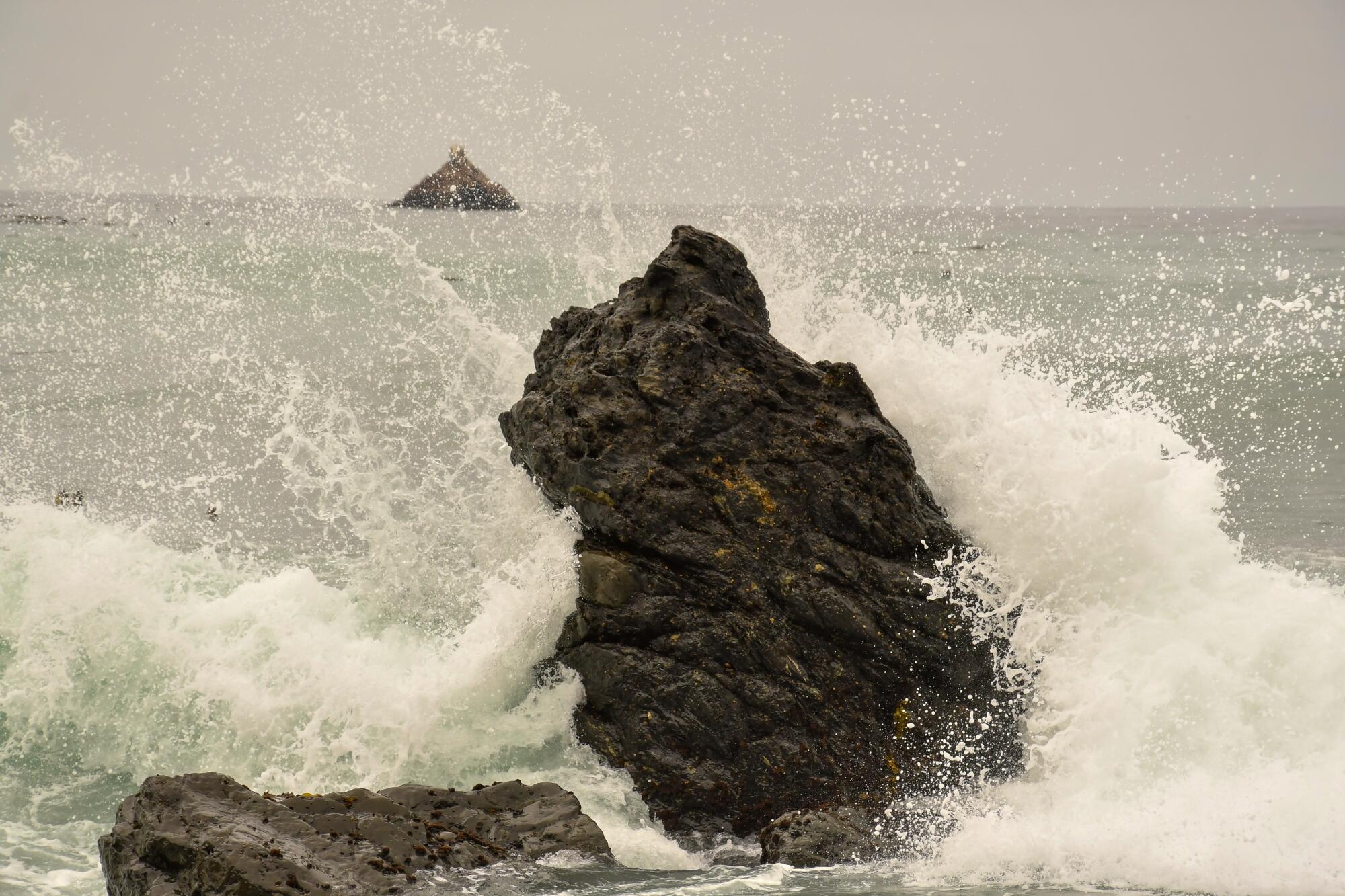
Waves crash near Sand Dollar Beach.
Big trees and a meandering creek at Limekiln State Park
Limekiln State Park is one California’s youngest state parks, having been set aside in the 1990s. But its occupants, especially the redwoods, have been around much longer.
And now, after park closures over storm damage and infrastructure issues and a reopening early this year, we have a chance to enjoy the place again. Or at least part of it. The park’s campground, Hare Creek Trail and Falls Trail remain closed.
But there’s still plenty of opportunity to check out the rare overlap of species from northern and southern California. As the Save the Redwoods League notes, “You can’t find both yucca and coast redwoods in very many parks.”
The park is about 4.4 miles south of the Highway 1 closure. Entrance is $10 per vehicle. I savored the 1.5-mile out-and-back Limekiln Trail, which is one of the best ways to see redwoods in the area. And once again, no fellow hikers.
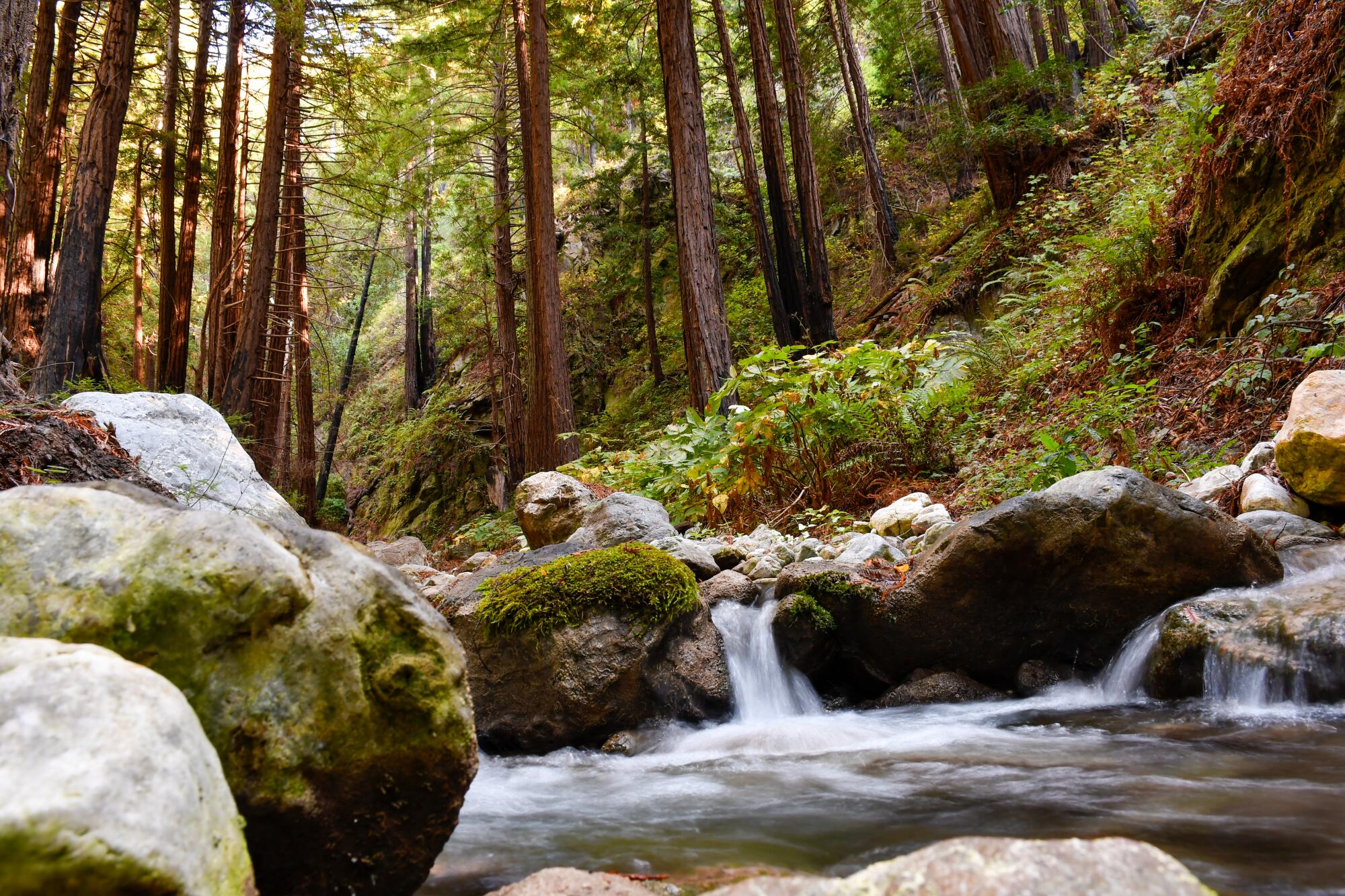
Highway still too busy for you? How about an isolated lodge or a silent monastery?
Just south of the highway closure, the rustic, isolated Lucia Lodge and the New Camaldoli Hermitage, a Benedictine monastery, remain open for overnight guests.
But not everyone knows this. Unless somebody at Google HQ has just made a fix, Google Maps will tell you incorrectly that the hermitage and lodge are beyond the road closure. Nope. They’re both on the south side of the road closure, accessible to northbound traffic. And they’re both really quiet.
“People come here for silent, self-guided retreats,” said Katee Armstrong, guest ministry specialist at New Camaldoli Hermitage. Its accommodations, high on the slopes above the highway, include nine single-occupancy rooms and five cottages with kitchenettes ($145 nightly and up).
Meanwhile, on the ocean side of the highway, the Lucia Lodge’s 10 very basic units are visible from the road. Four of them are cabins that go back to the 1930s, when Highway 1 was new.
Some nights, there are only one or two guests, and those guests typically see no hotel employees, because there’s no lobby and the staff is down to a skeleton crew. (The lodge’s restaurant and lobby burned down in 2021.) The nearest restaurant is at Treebones, about 10 miles south.
“We have to have a conversation with every guest who books with us,” said Jessie McKnight, the lodge reservationist. Many “end up canceling once they understand the situation,” she said. “You’re kind of on your own.”
Ad yet, she added, “it’s so rare to experience Big Sur like this. Once the road opens, I think it’s going to be right back to being a zoo.”
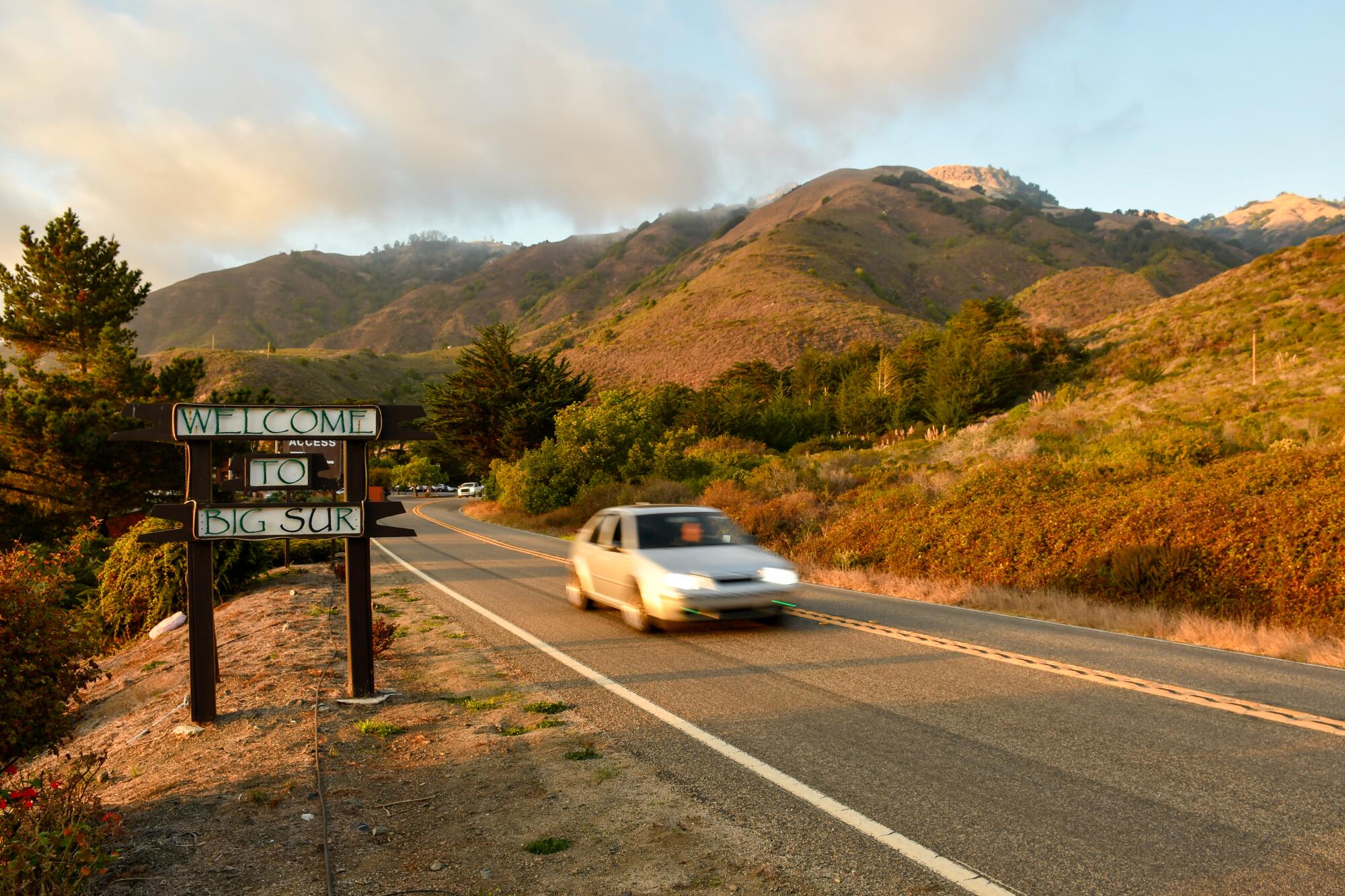
The road to Ragged Point Inn.
